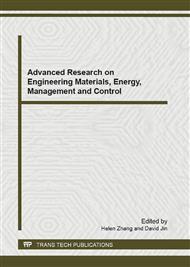p.364
p.369
p.373
p.377
p.381
p.385
p.389
p.395
p.399
Distributed Fieldbus Technology for Generator Excitation System Data Storage Design
Abstract:
In this study is the use of the generator excitation system design parameters for distributed fieldbus technology and real-time data display module record, will transfer to the field bus data processing and real-time storage of a design. Generator current and terminal voltage and other electrical parameters by the CAN bus pass, when a failure occurs, the fault current and other electrical parameters display, and store it to MRAM or FRAM memory, and also through the external communications port to be transferred to PC and other networks. System uses magnetic resistance random access memory, ferroelectric memory extends the storage capacity, so that fault recording function can be achieved; application PIT and RTC, the timing accuracy of a millisecond, improve the recording wave function
Info:
Periodical:
Pages:
381-384
Citation:
Online since:
January 2012
Authors:
Keywords:
Price:
Сopyright:
© 2012 Trans Tech Publications Ltd. All Rights Reserved
Share:
Citation:


